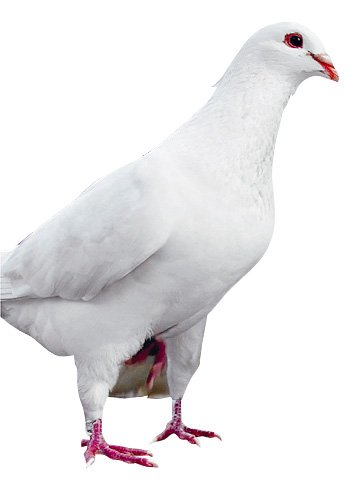It looks like you're using an Ad Blocker.
Please white-list or disable AboveTopSecret.com in your ad-blocking tool.
Thank you.
Some features of ATS will be disabled while you continue to use an ad-blocker.
China reports more H7N9 cases, deaths; virus may be in pigeons [may be related to dead pigs?]
page: 17
share:
China reports more H7N9 cases, deaths; virus may be in pigeons
www.cidrap.umn.edu
(visit the link for the full news article)
Apr 4, 2013 (CIDRAP News) – Chinese health officials today reported five more human infections, along with two more deaths, from the H7N9 avian influenza virus, which media reports said has now been detected in samples from pigeons at an agricultural market in Shanghai.
The latest reports appeared to raise the total number of cases to 14, with 6 deaths. .
Among today's new developments is the first H7N9 infection in a child, who is apparently sick with a milder illness, and media reports that a contact of one of the confirmed cases is sick with a flu-like illness.
Related News Links:
www.worldjournal.com
news.xinhuanet.com
www.huffingtonpost.com
vitals.nbcnews.com< br />
Related AboveTopSecret.com Discussion Threads:
Over 1200 dead pigs fished out of Huangpu Jiang, Shanghai
Dead pigs float down river by the thousands in China
Scientists: China Bird Virus Likely Silent Threat
2 In China First Known Deaths From H7N9 Bird Flu
edit on 5/4/13 by
diqiushiwojia because: (no reason given)
One thing to which you might pay attention:
That's the same place where thousands of pigs were fished up from the Huangpu Jiang!

What's more:
One of the Shanghai deaths (a Wu) died on 10 March, while the pigs were first discovered on 11 March.
Another was a pig vendor.
That's three coincidences so far. What do you think? Could it be that the H7N9 is related to the pigs after all?
The pigeon in question (from hk.news.yahoo.com... F%BEh7n9%E6%AF%92%E9%B4%BF-220446864.html):

www.cidrap.umn.edu
(visit the link for the full news article)
From this thread:
I vote for pigeon flu.
Xinhua, citing the country's agriculture ministry, said the samples were collected at an agricultural marketplace in Shanghai's Songjiang district. Tests at China's national avian influenza reference laboratory found that gene sequences in the H7N9 viruses from the pigeons matched those that infected humans.
That's the same place where thousands of pigs were fished up from the Huangpu Jiang!

What's more:
One of the Shanghai deaths (a Wu) died on 10 March, while the pigs were first discovered on 11 March.
Another was a pig vendor.
That's three coincidences so far. What do you think? Could it be that the H7N9 is related to the pigs after all?
The pigeon in question (from hk.news.yahoo.com... F%BEh7n9%E6%AF%92%E9%B4%BF-220446864.html):

www.cidrap.umn.edu
(visit the link for the full news article)
edit on 5/4/13 by diqiushiwojia because: (no reason given)
edit on 5/4/13 by
diqiushiwojia because: use uls and lis instead
From this thread:
Originally posted by rickymouse
why do they have to give names with numbers and names. Can't they call it the seagull flu or pigeon flu. That would be better for us regular people who have no interest in technical names.
I vote for pigeon flu.
edit on 5/4/13 by diqiushiwojia because: (no reason given)
edit on 5/4/13 by diqiushiwojia because:
(no reason given)
It makes me wonder if theres a hygiene problem causing this. It was not that long since there was dead pigs floating in a river!. Add the
industrialised smog clouds and theres some serious health problems in the making there . And i say pigeon flu to. ......Thanks for posting
edit on 5-4-2013 by TheDoctor46 because: (no reason given)
Thank you so much for posting this and reminding me about the pigs.
It is rather ominous when that information is added into the news of the past few days. Here is a bit from an article that I was reading yesterday morning on Yahoo News:
It is scary to think about what could happen if a more deadly but harder to transmit flu (avian) combines with a less lethal but very easy to transmit flu (swine).
Thanks again for the heads up.
Edit to add: Pandemic of 1918 was most likely an avian flu that spread to swine first. Thus the scary factor.
It is rather ominous when that information is added into the news of the past few days. Here is a bit from an article that I was reading yesterday morning on Yahoo News:
Flu viruses evolve constantly, and scientists say such changes have made H7N9 more capable of infecting pigs. Pigs are a particular concern because bird and human flu viruses can mingle there, potentially producing a bird virus with heightened ability to spread between humans, said Dr. William Schaffner, a flu expert at the Vanderbilt University School of Medicine. That's what happened in 2009 with swine flu. The scientists who inspected the genetic data also said that based on information from the genes and Chinese lab testing, the H7N9 virus appears able to infect some birds without causing any noticeable symptoms. Without obvious outbreaks of dying chickens or birds, authorities could face a challenge in trying to trace the source of the infection and stop the spread. If there are no obvious symptoms in birds or pigs "nobody recognizes the infection in animals around them. Then the transmission from animal to human may occur," Tashiro said. "In terms of this phenomenon, it's more problematic."
It is scary to think about what could happen if a more deadly but harder to transmit flu (avian) combines with a less lethal but very easy to transmit flu (swine).
Thanks again for the heads up.
Edit to add: Pandemic of 1918 was most likely an avian flu that spread to swine first. Thus the scary factor.
edit on 5-4-2013 by NiteNGale2 because: (no reason given)
Were the pigs part of an experiment or project...??
Why were they not burn't if they died of something strange......? There were alot of pigs floating down the river, maybe the pigeons started pecking away at the dead porchine.....
The more you think about the pig story then the more it just doesn't sound quite right.....does it..?
regards
PDUK
Why were they not burn't if they died of something strange......? There were alot of pigs floating down the river, maybe the pigeons started pecking away at the dead porchine.....
The more you think about the pig story then the more it just doesn't sound quite right.....does it..?
regards
PDUK
Well, it looks like this may be the real thing, although it's heartening that only a few people have gotten it and died so far (compared with the pig
population, who are taking the brunt of it). So what we maybe should do now is put up an analysis of the flu itself, and what to do if you catch it.
EDIT: After minutes of negotiation and bribery, the professors and Nobel Prize winners at wikipedia have kindly let us link a page for H7N9. It's short right now but they do list quite a few references with links. en.wikipedia.org... The World Health Organization (WHO?) is doing there "Nothing to worry about, it's not jumping between humans" thing, which is slightly encouraging.
EDIT: After minutes of negotiation and bribery, the professors and Nobel Prize winners at wikipedia have kindly let us link a page for H7N9. It's short right now but they do list quite a few references with links. en.wikipedia.org... The World Health Organization (WHO?) is doing there "Nothing to worry about, it's not jumping between humans" thing, which is slightly encouraging.
edit on 5-4-2013 by Aleister because:
(no reason given)
edit on 5-4-2013 by Aleister because: (no reason given)
www.bbc.co.uk...
They have closed main poultry markets in Shanghai as a precaustion........
www.bbc.co.uk...
Above is on the spread and issue currently viewed in China
www.medicalnewstoday.com...
Another source for this outbreak..
PDUK
They have closed main poultry markets in Shanghai as a precaustion........
www.bbc.co.uk...
Above is on the spread and issue currently viewed in China
www.medicalnewstoday.com...
Another source for this outbreak..
PDUK
edit on 5-4-2013 by PurpleDog UK because: addition of text
edit on 5-4-2013 by PurpleDog UK because: (no reason
given)
edit on 5-4-2013 by PurpleDog UK because: spelling
Without obvious outbreaks of dying chickens or birds, authorities could face a challenge in trying to trace the source of the infection and stop the spread. If there are no obvious symptoms in birds or pigs "nobody recognizes the infection in animals around them. Then the transmission from animal to human may occur," Tashiro said. "In terms of this phenomenon, it's more problematic."
Well, when occultists view anyone who slaughters an animal for food as 'murderers' and who therefore adopt a vegan lifestyle and upholds a utopia of 500 million, what better way to call for a mass slaughter of domesticated livestock used for food in the name of public safety? They are laying the excuse - a virus that remains hidden in our food supply. Fear porn. We went through this in the UK a decade ago - mass culling of all livestock, pets as well, regardless of infection status.
Human engineered mass starvation based upon fears of flu death. And the population consumed by the fear of death, will hand over the livestock to be slaughtered. "Skin for skin!" Satan replied. "A man will give all that he has to save his own life".
new topics
-
Half-Life 2 is 20 Years Old - its Also Free on Steam until the 18th
Video Games: 2 hours ago -
Does the Trump win mean No More Taylor Swift??
Politicians & People: 6 hours ago -
Trump-appointed judge blocks Biden administration overtime rule
Social Issues and Civil Unrest: 8 hours ago
top topics
-
Don't cry do Cryo instead
General Chit Chat: 13 hours ago, 11 flags -
Does the Trump win mean No More Taylor Swift??
Politicians & People: 6 hours ago, 11 flags -
Trump-appointed judge blocks Biden administration overtime rule
Social Issues and Civil Unrest: 8 hours ago, 7 flags -
Tariffs all around, Except for ...
Dreams & Predictions: 15 hours ago, 6 flags -
Half-Life 2 is 20 Years Old - its Also Free on Steam until the 18th
Video Games: 2 hours ago, 1 flags
active topics
-
Does the Trump win mean No More Taylor Swift??
Politicians & People • 37 • : Oldcarpy2 -
Mike Tyson returns 11-15-24
World Sports • 65 • : argentus -
Anybody else using Pomodoro time management technique?
General Chit Chat • 12 • : Cabin -
Tariffs all around, Except for ...
Dreams & Predictions • 28 • : network dude -
Half-Life 2 is 20 Years Old - its Also Free on Steam until the 18th
Video Games • 1 • : Athetos -
-@TH3WH17ERABB17- -Q- ---TIME TO SHOW THE WORLD--- -Part- --44--
Dissecting Disinformation • 3280 • : 777Vader -
Trump-appointed judge blocks Biden administration overtime rule
Social Issues and Civil Unrest • 6 • : xuenchen -
Trump sues media outlets -- 10 Billion Dollar lawsuit
US Political Madness • 54 • : Oldcarpy2 -
WATCH LIVE: US Congress hearing on UFOs, unidentified anomalous phenomena
Aliens and UFOs • 92 • : Lazy88 -
Thune selected as Senate Republican Leader
US Political Madness • 79 • : WeMustCare
7
